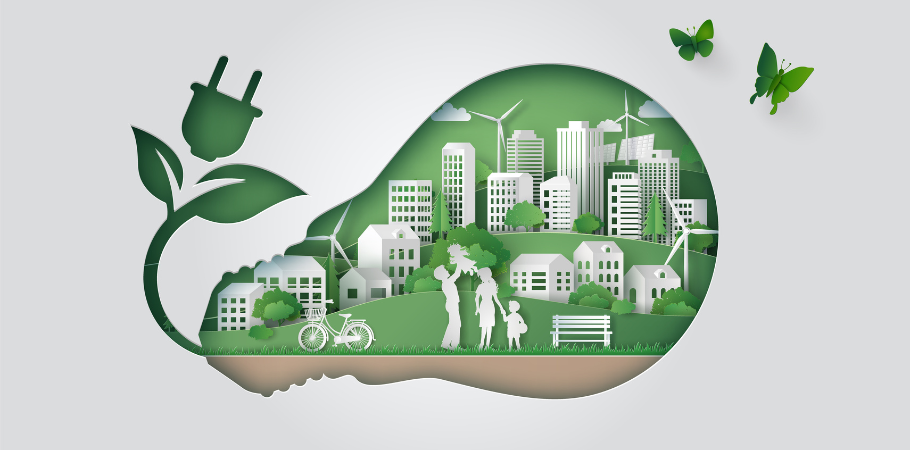
Green financing is now an area that is increasingly attracting the attention of organizations. Our planet is facing climate change and serious environmental pollution. Therefore, the green financing investment development market in many countries needs the cooperation of the Government, businesses, banks and people.
In this article, let’s discuss the concept of green financing and the current situation of green investment in the world.
What is Green Financing?
Green financing is to increase the level of financial flows (from banking, micro-credit, insurance and investment) from the public, private and not-for-profit sectors to sustainable development priorities. This involves better managing environmental and social risks, seizing opportunities that offer decent returns and environmental benefits, and ensuring greater accountability.
Key Aspects of Green Financing
- Managing Environmental and Social Risks: Implementing risk management frameworks that account for environmental and social impacts.
- Opportunities with Returns and Environmental Benefits: Investing in projects and initiatives that provide both financial returns and positive environmental outcomes.
- Greater Accountability: Ensuring transparency and accountability in the allocation and use of green funds.
Promoting Green Financing
Green financing can be encouraged through several strategies:
- Regulatory Frameworks: Updating and improving countries’ regulatory frameworks to support and incentivize green financing.
- Harmonizing Public Financial Incentives: Aligning public financial incentives to encourage investments in sustainable and green projects.
- Sectoral Increases in Green Financing: Boosting green financial flows from different sectors, including public, private, and not-for-profit sectors.
- Alignment with Sustainable Development Goals (SDGs): Ensuring that public sector financing decisions align with the environmental dimensions of the SDGs.
- Investment in Clean and Green Technologies: Increasing investments in technologies that promote clean energy and reduce environmental impact.
- Sustainable Natural Resource-Based Green Economies: Financing projects that support sustainable natural resource management and green economies.
- Climate Smart Blue Economy: Investing in sustainable use and management of ocean resources for economic growth and improved livelihoods.
- Green Bonds: Promoting the use of green bonds to finance environmentally friendly projects.
By implementing these strategies, green financing can play a pivotal role in driving sustainable development and addressing environmental challenges.
Types of Green Financing
The financial system includes loans, mortgages, investments,… used to develop green projects such as planting trees, designing energy-saving buildings,… Thereby achieving the goal of minimizing the impact on global climate change, contributing to environmental protection and sustainable economic development. Specific types of green financing are:
Green Mortgage
This is a type of mortgage loan for loans with a specific purpose, such as:
- Buying or building a house according to green standards
- Buying an electric or hybrid car, upgrading a house to save energy
- Investing in renewable energy

Green Credit
Green credit is a loan lent by credit institutions for the purpose of consumption, investment in production and business without harming the environment. These loans usually have preferential interest rates with flexible terms.
Green Banking
Green banks operate similarly to traditional banks, but they use public funds to promote private investment in renewable energy, green transportation, and sustainable agriculture,… and environmentally friendly initiatives.
Green Bonds
It is a bond issued to raise capital for green projects. These bonds are often of interest to investors because they offer dual benefits: financial returns and environmental benefits. For example, the Electricity of Vietnam has issued green bonds to raise capital for renewable energy projects.
Benefits of Green Financing
Green financing is an important and necessary field for the sustainable development of society. Effective implementation of green finance will bring benefits to both the environment, society and the economy.
For the environment
- Support environmentally friendly projects such as green hills, waste collection at ponds and lakes,… helping to reduce greenhouse gas emissions, water pollution, air pollution and protect natural resources.
- Mobilize capital for projects to respond to climate change such as building coastal dike systems, planting coastal mangrove forests,…
For the economy
- Contributing to promoting sustainable economic development and creating new jobs.
- Businesses mitigate financial risks associated with climate change and the depletion of natural resources.
- Improve the competitiveness of businesses, and at the same time attract investment from investors who are interested in environmental, social and governance (ESG).
For society
- Improving the quality of human life through supporting projects that provide clean water, clean energy, green transportation, and green housing.
- Reducing social inequality through social housing development projects in areas inhabited by disadvantaged people such as women, children, and people with disabilities,…

Strategies of Developing a Green Financial System in the World
Countries around the world apply the strategy of developing a green financial system according to many different strategies:
Europe
The European Union (EU) has put in place many policies and regulations to promote green finance, such as the Sustainable Finance Strategy and the Green Finance Action Plan. EU countries also have many financial institutions that specialize in providing capital for green projects.
For example:
- European Investment Bank (EIB): Provides financing for green projects in the fields of renewable energy, energy efficiency, green transport and infrastructure.
- France has developed the “Invest for the Future” program to raise 100 billion euros for green projects.
- Germany enacted the “Climate Plan 2050” to reduce greenhouse gas emissions by 80% by 2050.
Asia
Asia is the region with the fastest economic growth and is also the region most affected by climate change. As a result, many Asian countries are adopting a market-focused green finance model to promote sustainable development. Several other Asian countries also have many policies and regulations that promote green finance, including:
- Japan’s “Green Growth 2021-2030” program was born to mobilize 100 billion USD for green projects by 2030.
- South Korea issued a “Green Finance Action Plan” to mobilize $50 billion for green projects by 2025.
The United States
In the US, there is the Connecticut Green Bank. It is a specialized, state-funded financial institution that partners with the private sector to increase investment in New York’s clean energy market, creating an efficient, reliable, and sustainable energy system.
Connecticut raises funds for projects to deploy clean energy technologies, proven throughout New York State through:
- Leveraging private sector capital to support and expand the clean energy finance market
- Strengthening capital market operations and development reduces the need for government support
- Promoting faster and more widespread deployment of clean energy assets, contributing to economic development, reducing environmental impact, and delivering more green energy benefits per dollar spent.
South Africa
To implement the goals of greening the economy in the National Strategy to Respond to Climate Change. The South African government has enacted many policies and initially achieved certain achievements:
- Investment in green projects in South Africa has increased from $5 billion in 2015 to $15 billion in 2020
- South Africa’s greenhouse gas emissions fell by 10% between 2015 and 2020
- South Africa’s green finance industry has created more than 100,000 jobs
In conclusion, green financing plays an important role in promoting sustainable development, protecting the environment and responding to climate change. The development of green finance brings many benefits to both businesses, investors and the whole society. Thus, it is crucial for the Government, businesses, banks and people cooperating in the green financing investment development.
See more: Singapore’s Green Finance Job Revolution


